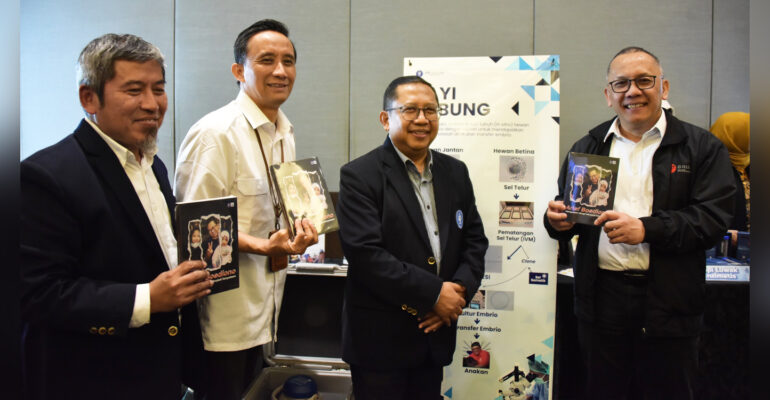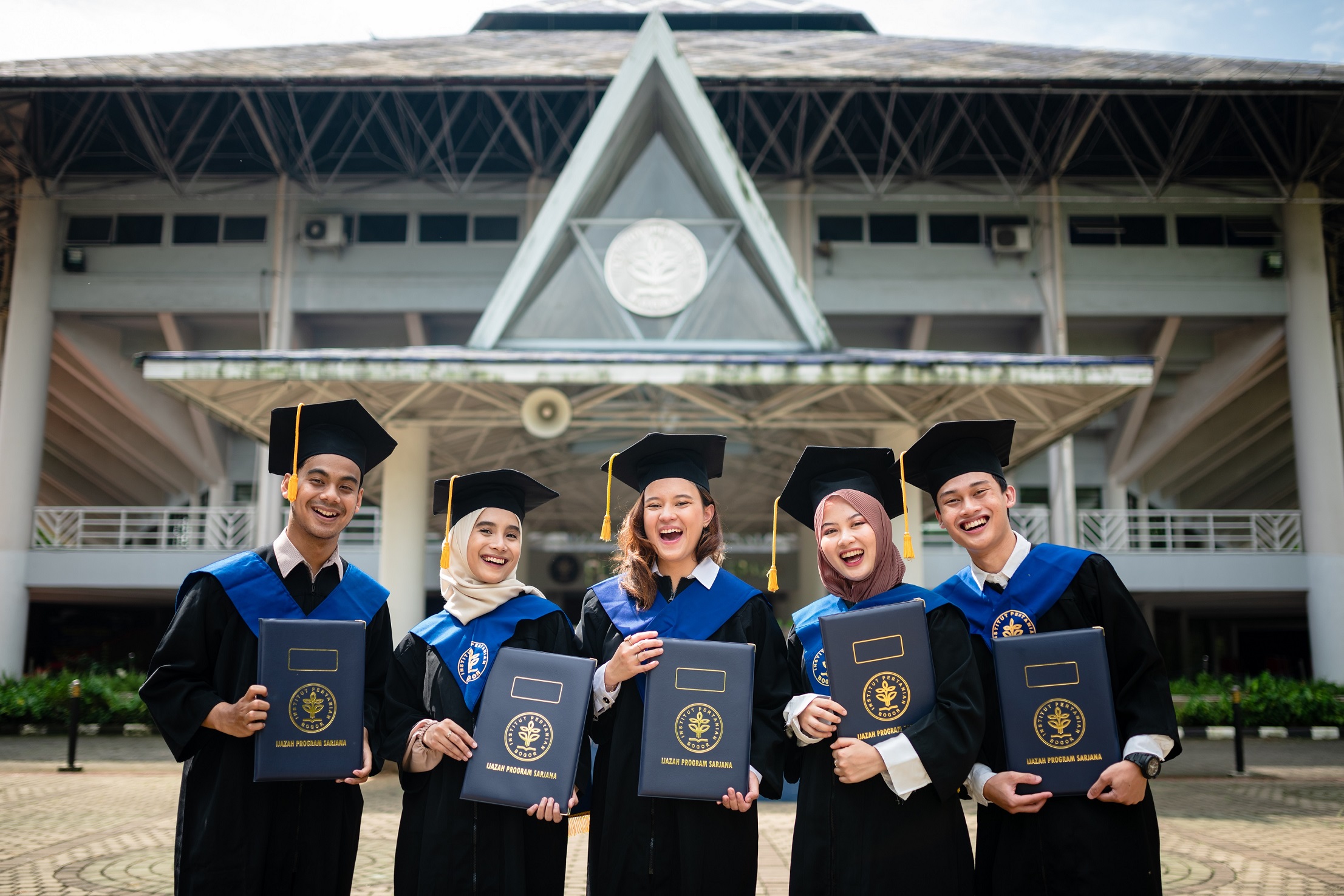IPB University Researchers Apply IVF Technology to Rare Animals

IPB University researchers from the School of Veterinary Medicine and Biomedical Science (SKHB) have successfully applied IVF technology. Not only applicable to humans, this technology was developed to save animals, especially rare and protected animals.
Through assisted reproductive technology (ART) and BioBank, the IPB University team consisting of researchers from the School of Veterinary Medicine and Biomedical Science (SKHB) together with researchers from the Faculty of Mathematics and Natural Sciences (FMIPA) received a mandate from the Government of the Republic of Indonesia through the Ministry of Forestry to save the Sumatran rhino.
This innovation was launched by IPB University through the Directorate of Research and Innovation (DRI) at the IPB Research and Innovation Week, Monday (16/12), at the IPB International Convention Center (IICC), Bogor.
“Efforts to produce embryos in vitro (outside the body) of Sumatran rhinos are carried out by collecting eggs and sperm in the field, followed by fertilization using a single sperm injection method (intracytoplasmic sperm injection / ICSI),” explained Prof Arief Boediono as a researcher.
Death is not the end of reproductive life. He cited the example of a cow slaughtered at an abattoir (RPH), the individual cow is anatomically dead. However, the ovaries (from female cows) and testes (from male cows) still have potential as a source of gamete cells (eggs, sperm).
“Egg cells can be collected from the ovaries of newly dead cows for in vitro embryo production. The resulting embryos can be transferred to produce calves from dead mothers,” he said.
He further explained that egg collection can be collected from living animals so that it can be done repeatedly without having to wait for the animal to die. This technology is known as ovum pick up (OPU). Furthermore, the eggs produced are fertilized and cultured in vitro until an embryo is obtained that has the potential to become a calf.
Efforts to save rare and protected animals such as Sumatran rhinos, tigers, anoa, and others can be carried out with the application of this technology. The resulting embryos can be directly transferred if there is a recipient, or embryos are frozen and stored in liquid nitrogen (-196 oC), which can be used at any time if there is a ready recipient.
Prof Arief explained that basically the fertilization process in mammals only requires one sperm to fertilize one egg. Using a micromanipulator, the selected sperm is injected directly into the cytoplasm of the egg, mimicking the natural fertilization process.
“Furthermore, the resulting embryo will be frozen until one day a recipient can be obtained,” he added.
In addition to storing sperm, eggs, and embryos, the BioBank facility is also used to freeze somatic cells that can be used as a source of donor cells in clone programs.
“This ART technology is the forerunner of IVF technology in humans,” said the Professor of SKHB IPB University.
According to regulations in Indonesia, IVF programs can only be carried out on couples who are legally married. In married couples who have not had children and there are problems with the quality of the husband’s sperm, it will result in low fertilization results.
In conventional methods, in vitro fertilization requires about 40 to 100 thousand sperm per milliliter. In fact, many husbands have sperm quality below normal level.
In such conditions, said Prof Arief, the in vitro fertilization process can be done with the single sperm injection (ICSI) method, only one husband’s sperm is needed for the fertilization process.
“This method is a revolution in assisted reproductive technology to overcome the problem of the husband’s sperm quality factor,” he said.
Together with the IVF program team in Indonesia, Prof Arief has successfully delivered more than 6,000 babies from couples who have not had a baby.
The IVF program in humans begins with hormonal stimulation of the wife to get more eggs than normal. The eggs obtained have the potential to produce more than normal embryos.
Some couples have managed to get two children of different ages from the same IVF process. The first child came from the results of embryo transfer in the initial program, while the second child was born from embryos that had been frozen for more than two years. This proves that the frozen embryos were not damaged during the freezing process.
“The development and application of IVF technology in animals and humans can help optimize the reproductive function of production animals, save the extinction of rare animals, and help married couples who do not have children,” he concluded. (*/Rz) (IAAS/RUM)



